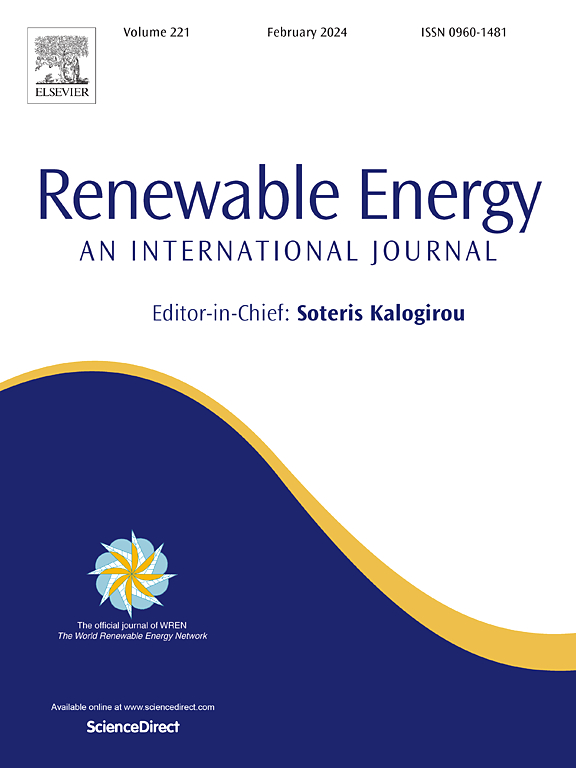Effect of spacing ratio on FIV response of multiple cylindrical oscillators supported by maglev
IF 9
1区 工程技术
Q1 ENERGY & FUELS
引用次数: 0
Abstract
Utilizing flow-induced vibrations for low-velocity ocean current energy generation is effective. Replacing metal springs with magnetic levitation systems to support the oscillators offers advantages such as easy stiffness adjustment and better underwater maintenance. This makes it significant for flow-induced ocean current energy harvesting. A multi-oscillator design can further enhance energy output capacity, but the mutual interference between oscillators results in vibration responses that differ significantly from those of a single oscillator. This paper employs the RANS method and equivalent magnetic charge methods to develop a coupled model of FIV of rigid cylindrical oscillators supported by magnetic levitation. Numerical simulations analyze the effect of spacing ratio on oscillation amplitude ratio, vibration frequency, and vortex shedding patterns. The results show that in double tandem cylindrical oscillators with identical diameters supported by magnetic levitation, the spacing ratio significantly affects the vibration response of the upstream and downstream oscillators. Under the characteristics of the magnetic spring, the interference between upstream and downstream oscillators is stronger with a small spacing ratio, leading to peak amplitude ratios even at moderate to low flow velocities. When G/D = 2 and U = 0.5 m/s, the downstream oscillator reaches a maximum amplitude ratio of A* = 1.06, 2.26 times that of a single oscillator at the same flow velocity. In three tandem cylindrical oscillators with identical diameters supported by magnetic levitation, the vibration response fluctuates more than in the two-oscillator case, exhibiting distinct three-stage branching characteristics. With G1/D = 2 fixed, when G2/D = 2 and U = 0.6 m/s, the downstream oscillator reaches a maximum amplitude ratio of A* = 1.2, 2.45 times that of a single oscillator at the same flow velocity. Vortex analysis indicates that under appropriate spacing ratios and flow conditions, the interference among multiple oscillators is amplified, enabling the downstream oscillators to better absorb and utilize the coherent vortices from the upstream oscillators, thus optimizing the vibration response.
求助全文
约1分钟内获得全文
求助全文
来源期刊

Renewable Energy
工程技术-能源与燃料
CiteScore
18.40
自引率
9.20%
发文量
1955
审稿时长
6.6 months
期刊介绍:
Renewable Energy journal is dedicated to advancing knowledge and disseminating insights on various topics and technologies within renewable energy systems and components. Our mission is to support researchers, engineers, economists, manufacturers, NGOs, associations, and societies in staying updated on new developments in their respective fields and applying alternative energy solutions to current practices.
As an international, multidisciplinary journal in renewable energy engineering and research, we strive to be a premier peer-reviewed platform and a trusted source of original research and reviews in the field of renewable energy. Join us in our endeavor to drive innovation and progress in sustainable energy solutions.
 求助内容:
求助内容: 应助结果提醒方式:
应助结果提醒方式:


